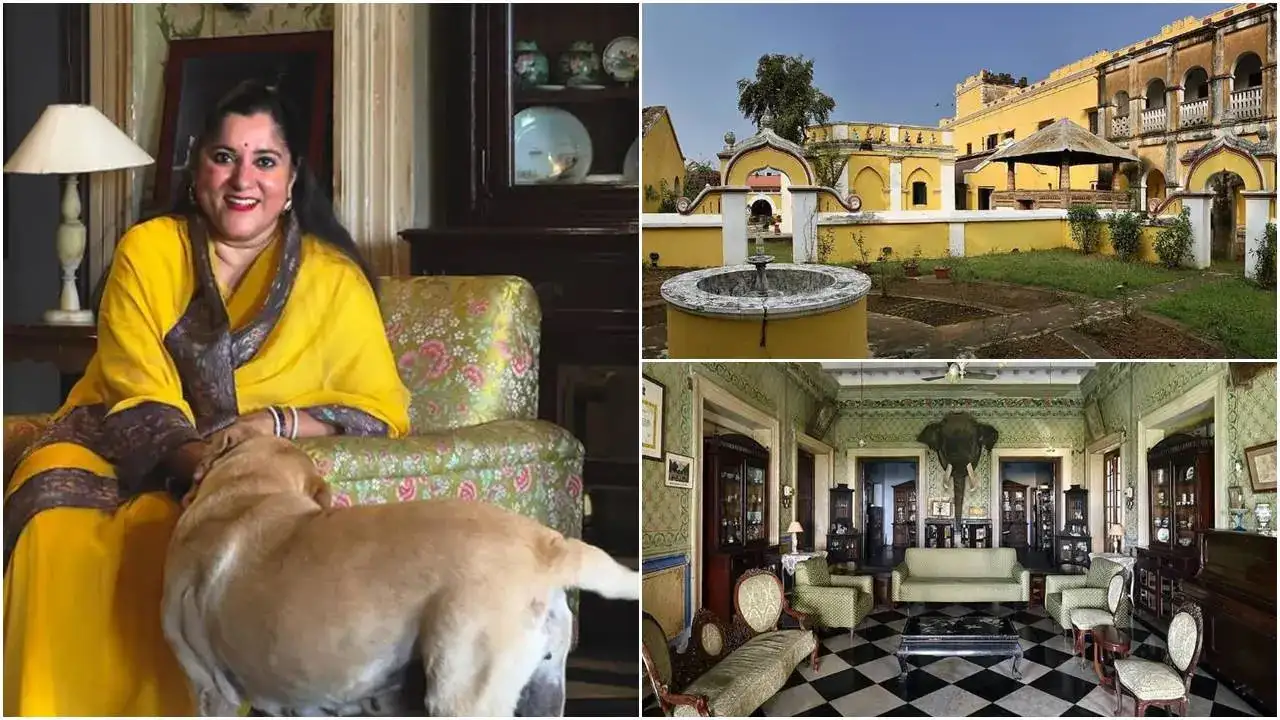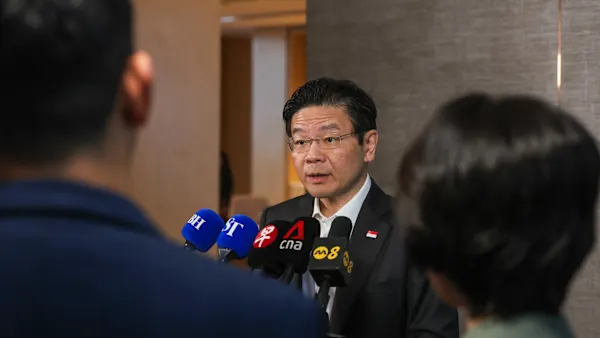Copyright timesnownews

The Dhenkanal royal family is of Rajput descent. Hari Singh Vidyadhar, who would later become the founder of the Dhenkanal family, came to Puri along with his brothers and was made the commander in chief of the army by the then ruler, Pratap Rudra Dev. Recognizing him for his bravery and valour, Pratap Rudra Dev gifted Hari Singh the lands of Karamulpatna. Hari Singh then commissioned a palace here, 35 kms away from the present-day town of Dhenkanal. When Maharaja Bhagirath Mahindra Bahadur, the fourteenth ruler after Hari Singh Vidyadhar ascended the throne in 1832, he began the construction of the current Dhenkanal Palace. The drawing room (pictured above) is said to have been built during the initial period of the palace's construction. The second drawing room added to the upper storey was used as a zenana and was a later addition. When Meenal Jhala married into the royal family of Dhenkanal 34 years ago, she wasn’t just stepping into a palace — she was stepping into a centuries-old legacy of art, culture, and craftsmanship. Coming from the royal family of Wankaner in Gujarat and moving to Odisha after her marriage to Raja Brigadier Kamakhya Prasad Singh Deo, she found herself captivated by the state’s remarkable artisanal traditions. Over the years, Princess Meenal Kumari Singh Deo has transformed not just her family’s heritage palace, but also the lives of local artisans who keep Odisha’s crafts alive. Princess Meenal Kumari Singh Deo Of Dhenkanal: A Palace That Breathes History and Heart The Dhenkanal Palace, perched on a hill with sweeping views of forests and valleys, is a living reminder of Odisha’s royal heritage. Once a private residence, it now opens its grand doors to travellers from around the world as one of Odisha’s first heritage homestays. This 18th-century palace blends colonial architecture with traditional Odia design — high arches, sprawling courtyards, and art-filled corridors that whisper stories of the past. When Princess Meenal first arrived, the palace required extensive restoration. Instead of hiring city-based designers or importing décor, she turned to the state’s own artisans. Every element of the restoration — from handwoven curtains to pattachitra-painted walls — was crafted locally. “The idea was to make the palace itself a canvas of Odisha’s living art forms,” she has said in interviews. Today, the palace serves not only as a boutique homestay but as a cultural hub where guests experience authentic royal living intertwined with craftsmanship and history. Princess Meenal Kumari Singh Deo Of Dhenkanal: Preserving Tradition Through Innovation For Princess Meenal, restoration was just the beginning. She soon realised that many traditional crafts were on the verge of decline. “If artisans can’t make a living, traditions die,” she often says — and so, she decided to act. She began connecting artisans within a 45-kilometre radius of Dhenkanal, bringing together creators of pattachitra (hand-painted cloth art), ikat weavers, dhokra (metal casting) artists, brass jewellers, and kansa utensil makers. To give this initiative structure and longevity, she established the Maharaja Bhagirath Mahindra Bahadur Foundation, named after her father-in-law. The foundation focuses on providing artisans access to education, training, and platforms to market their work. Under her guidance, Dhenkanal has quietly become a centre for sustainable craft-based livelihoods — an example of how heritage and modern entrepreneurship can thrive together. Princess Meenal Kumari Singh Deo Of Dhenkanal: Fashion, Craft, and Conscious Living Princess Meenal’s love for fashion reflects her philosophy — elegant, rooted, and sustainable. Through her label Minaketan, she promotes Odisha’s ikat and dokra crafts, blending them into contemporary silhouettes that appeal to modern sensibilities while staying faithful to their origins. Her collections often feature handwoven silk and cotton, earthy tones, and traditional motifs with a modern twist. She also believes that fashion should tell a story — of heritage, hands, and humanity. “Each fabric has a fingerprint — the weaver’s rhythm, the dyer’s patience, the designer’s imagination. That’s real luxury,” she once remarked. Her brand has showcased in exhibitions across India, drawing attention to Odisha’s underappreciated artistic wealth. Princess Meenal Kumari Singh Deo Of Dhenkanal: A Modern Royal With a Purpose Despite her royal lineage, Princess Meenal’s life in Dhenkanal is grounded and purposeful. Her days often begin with walks in the palace gardens, surrounded by peacocks and mango trees, followed by meetings with artisans and guests. Her approach to royalty is refreshingly contemporary — she sees it as a responsibility to serve, not just to inherit. Over the years, she has also been instrumental in promoting rural tourism and women-led enterprises in the region. Her vision is simple yet profound: to make traditional crafts both sustainable and aspirational. Whether it’s a silk saree woven in Nuapatna or a brass ornament cast in a nearby village, each piece represents continuity — the passing of heritage from one generation to the next. Princess Meenal Kumari Singh Deo Of Dhenkanal: Keeping Heritage Alive for the Future The Dhenkanal Palace today is more than a royal home — it’s a thriving symbol of Odisha’s cultural resilience. Guests who visit don’t just see chandeliers and courtyards; they encounter the pulse of living tradition. They dine off kansa plates, sleep under handwoven fabrics, and wake to the sound of temple bells echoing across the hills. Princess Meenal Kumari Singh Deo has achieved something rare: she has made history relevant. By restoring her palace and reviving dying crafts, she’s shown that heritage isn’t a relic of the past — it’s a vibrant, evolving story. In her world, royalty meets responsibility, and style meets sustainability. And in every thread, every artwork, and every corner of her palace, Odisha’s soul shines brighter than ever. Timeline of the Dhenkanal Palace and Its Rulers Early 16th Century – The Rajput Arrival Hari Singh Vidyadhar, of Rajput descent, arrives in Odisha with his brothers and is appointed commander-in-chief by King Pratap Rudra Dev of Puri. Recognising his courage, the king gifts him the lands of Karamulpatna, marking the beginning of the Dhenkanal royal family. 17th Century – Establishment of Dhenkanal Estate The successors of Hari Singh Vidyadhar consolidate their rule and begin shifting administrative and cultural focus towards present-day Dhenkanal, blending Rajput traditions with Odia heritage. 1832 – The Era of Maharaja Bhagirath Mahindra Bahadur The fourteenth ruler, Maharaja Bhagirath Mahindra Bahadur, initiates the construction of the grand Dhenkanal Palace — a striking fusion of colonial architecture and Odia aesthetics. The lower drawing room is built during this period. Late 19th to Early 20th Century – Architectural Flourish The palace expands further. A second drawing room and zenana quarters are added to the upper storey, and the palace becomes a hub for art, politics, and royal hospitality. Post-Independence – The Palace Endures Following India’s independence, the Dhenkanal royal family retains stewardship of the palace. Despite political change, it remains a bastion of heritage and tradition in Odisha. 1990s – The Arrival of Princess Meenal Princess Meenal Jhala of Wankaner marries Raja Brigadier Kamakhya Prasad Singh Deo and brings new life to Dhenkanal Palace. She begins a major restoration effort rooted in sustainability and local craftsmanship. Present Day – A Living Heritage Under Princess Meenal Kumari Singh Deo’s vision, the Dhenkanal Palace has evolved into a celebrated heritage homestay — a sanctuary of art, culture, and conscious luxury that honours Odisha’s living traditions.



